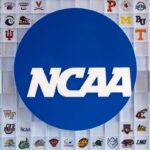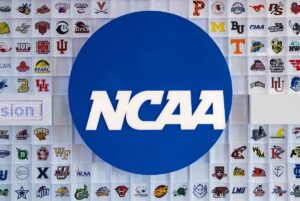
EDITOR’S NOTE: This article was originally published on our site on February 27, 2022. The author, Travis Knobbe, is not only our West Virginia beat writer, but he is a licensed attorney in Georgia, Virginia, West Virginia, and Pennsylvania, specializing in contract law. We felt it important in this time and place to revisit was Travis foresaw a couple of years ago. On Monday, an NLRB district office approved a petition from players on the men’s basketball team at Dartmouth, declaring they were employees of the university. The school is likely to appeal.
There also remains an ongoing case in California, where the NLRB is in court against the Pac-12, USC, and UCLA. In this case, the NLRB also seeks to have employees from the relevant schools deemed to be employees. UCLA is a public university, so primarily outside the jurisdiction of the NLRB. And the Pac 12 will be reduced to just two schools in approximately six months. Thus the legal activity is primarily focused on USC.
With every court decision; with every lawsuit filed, we are now subjected to grand scoping social media headlines that the end of the NCAA is near. Or that we are just a step or two away from all college athletes becoming employees. The fact is there is a lot more to be played out in the big picture of college athletics. At Last Word on College Football, we believe that in order to better understand the big picture, outside of unfounded proclamations, it is critical to review the granular details. Thus we are publishing an encore of Travis’ outstanding review of the matters at hand.
NCAA Athletes Shouldn’t Want To Be Employees
With the NCAA allowing NIL compensation, student-athletes finally won the right to earn income for the use of their name, image, and likeness. We wrote a series of articles exploring various issues related to NIL compensation. Among those, we focused on payment logistics. We proposed that colleges exercising control over the negotiation and payment of deals would raise Title IX concerns, among other things. Over the last few months, however, student-athletes breached a new frontier that raises new issues. That question is simple: are student-athletes employees? Some courts have weighed in preliminarily that complaints alleging employee status, at the very least, survive motions to dismiss. At the end of the day, though, we wonder whether this would be a positive development for student-athletes. On the whole, we opine that NCAA athletes shouldn’t want to be employees.
With Specialized Employment Comes Specialized Contracts
Student-athletes have pushed for years for more protection and freedom. Thus, receiving the benefits that come with employee status should be considered a good thing, right? On the protection side, that may be true. That said, that protection would come at a cost.
Indeed, our first rationale for concluding that NCAA athletes shouldn’t want to be employees centers on the types of contracts schools may then require. Presently, student-athletes receive various benefits. These include, for football players, a scholarship covering all costs of tuition, room, and board. The benefits also include an annual stipend that varies by school. Less obviously, the benefits include, for most Division I schools, health insurance benefits, catastrophic injury benefits, and loss-of-value insurance protecting against loss of income for career-ending injuries.
Additionally, student-athletes have limited rules governing their social media presence. They currently can transfer rather freely from one school to another. Finally, they generally have the freedom to negotiate their own NIL deals.
Receiving employee designation would lead to schools pursuing various contract provisions that limit some or all of these rights. Schools could, for example, limit athlete involvement in certain organizations or limit social media posting to avoid issues those schools deem controversial. As it turns out, these are not the only freedoms that may be limited.
Specialized Contracts Will Undo Recent Gains
Student-athletes fought for years to obtain the rights they currently enjoy. NIL compensation, for example, took decades to gain approval. The same holds true for the current transfer portal freedoms they now have. For now, outside of collective licensing agreements that allow student-athletes to receive money, athletes need not share their compensation with their schools or teammates. These gains come from a substantial effort by thousands of interested parties.
The schools will undoubtedly tip the scales of control back in their favor if they have to treat athletes as employees. Think about this. Student-athletes and their advocates argue: if a head coach can freely leave a school on short notice for a “bigger and better” opportunity, then student-athletes should also be able to freely change schools. That dance has been … delicate.
While this point about coaches remains, how does the analysis change if the athletes are also employees? A coach, after all, does not usually leave without paying a negotiated buy-out. Schools could just as easily negotiate a player buy-out fee (albeit proportional to the benefits the new employees would receive) before releasing a player from his or her contract. In fact, we suspect schools would push hard for this type of provision.
Additionally, schools could exercise more control over a student athlete’s endorsement deals than they do now. Indeed, professional sports leagues have some controls that limit certain types of endorsement deals, particularly where those deals use trademarks owned by the leagues, teams, and players’ associations. The leagues would have more control if not for player unions bargaining. Players pay substantial amounts each year to fund these unions. Thus, unless college athletes formed a union and paid the resulting costs, the schools would undoubtedly exercise more control over endorsements than their professional counterparts.
Employee Status May Kill Olympic Sports Programs
Generally, we possess limited sympathy for schools that generate millions of dollars each year beyond the current costs to run their athletic departments. Despite the common refrain that athletes receive expensive education benefits for their part in that business, that holds very little weight compared to the benefits schools receive. This holds true for the vast majority of Power Five football programs. It holds true for most men’s basketball programs. Finally, it holds true for some baseball programs and, arguably, a handful of soccer programs.
For almost all other sports, however, the school loses money. In common parlance, we refer to these as non-revenue sports. Typically, they involve the Olympic sports programs like the gymnastic teams, the swimming team, the track team, etc. In other words, the Olympic sports programs cost more to maintain than they generate in revenue. Now, most Power Five schools more than make up for the losses through their revenue-generating sports.
For example, according to Sportico, in 2020, Alabama generated total revenue of nearly $190 million through its athletic department. It paid about $173 million in expenses across all sports. For football, revenue ($118 million) nearly doubled expenses ($58.5 million). In men’s basketball, revenue ($14.7 million) also eclipsed expenses ($9.4 million). For all other sports, Alabama generated just $10.7 million in revenue compared to $30.1 million in expenses.
If schools must add student-athlete salaries, benefits, worker’s compensation premiums, etc., to the expense side of the ledger, what do those numbers look like then? Keep in mind, of course, that Title IX will require benefits to be spread fairly evenly across all sports. That $17 million margin Alabama evaporates quickly in that circumstance. Where do fans and athletes think cuts will be made? The first cuts will no doubt come to the Olympic sports programs. As a result, NCAA athletes shouldn’t want to be employees precisely because such status may kill their programs.
The IRS Looms Large
One potentially hidden trap here comes from the IRS. For the most part, under the current framework, a student-athlete need not pay taxes for his or her scholarship benefits. The IRS rules very clearly state, however, that, when tuition, room, board, and other benefits result from an employment relationship (for example, a graduate assistant), those benefits become taxable income.
This may not seem like a big deal for QB1 at a blue blood program who would command substantial income for any salary component that would come from employee status and from endorsement deals. That athlete would have enough income to actually pay the taxes. What about, however, a rising star freshman diver who would not command a salary above and beyond the scholarship benefits? How does that athlete pay for the taxes due on those benefits? Or what about the third-year-long snapper recently awarded a scholarship at, say, Stanford? Do we expect that player to command a “salary” and endorsement deals to cover the approximately $90,000.00 value of the scholarship benefits?
We will certainly follow this evolving trend closely, but we wonder out loud whether the attorneys pursuing these cases have fully advised their clients of the potential consequences.

The post NCAA Athletes Shouldn’t Want To Be Employees appeared first on Last Word on College Football.
